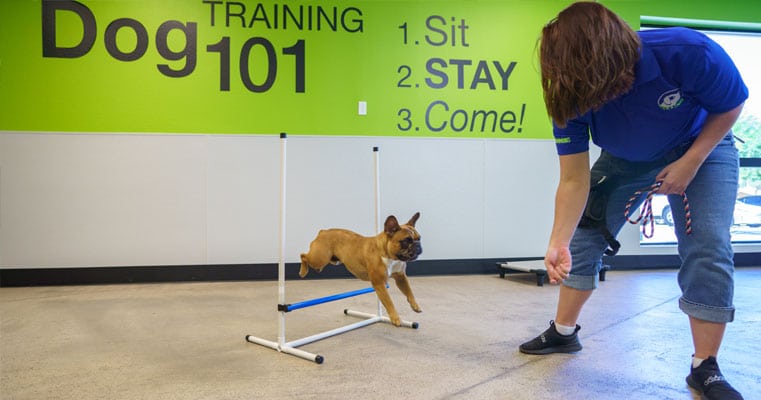Top Strategies for Effective Dog Training Techniques Every Pet Owner Should Know
Top Strategies for Effective Dog Training Techniques Every Pet Owner Should Know
Blog Article
Transform Your Canine's Behavior With Proven Training Methods
Changing your pet dog's behavior calls for a nuanced understanding of their specific traits and demands, in addition to the application of tested training techniques. By employing favorable support and identifying necessary hints in their body movement, you can successfully deal with typical behavioral concerns such as too much barking or jumping. Uniformity in your training strategy not just improves obedience yet also cultivates a deeper bond of trust fund and respect in between you and your pet. The path to successful makeover might offer unpredicted challenges that warrant further exploration.
Recognizing Pet Dog Habits
Understanding canine behavior is important for efficient training and interaction in between humans and their canine companions. Dogs, as social pets, show a range of habits influenced by genetics, environment, and experiences - Dog training. Recognizing these behaviors aids proprietors customize their training approaches to fulfill the specific needs of their pets
Secret aspects of dog actions include body movement, articulations, and social interactions. For example, a wagging tail often suggests exhilaration, while a reduced head might indicate entry or fear. Comprehending these signals can assist proprietors translate their pet's emotion and react suitably. Additionally, socializing plays a vital role in forming actions; dogs that communicate positively with other animals and various people are usually much more adaptable and well-adjusted.
Additionally, acknowledging anxiety signals-- such as avoidance, panting, or pacing actions-- can stop rise into a lot more serious concerns. Owners that are attuned to their pet dog's habits can produce a nurturing and safe setting, cultivating trust fund and enhancing the training process. Ultimately, a deep understanding of canine actions lays the foundation for an unified connection and efficient training results, guaranteeing both pets and their proprietors thrive together.
Positive Reinforcement Methods
Favorable reinforcement techniques are widely recognized as one of one of the most reliable approaches for training canines, promoting a positive understanding environment. This method entails fulfilling wanted behaviors with treats, appreciation, or play, thereby urging the pet to duplicate those habits. Unlike revengeful approaches, positive support constructs trust fund and strengthens the bond in between the trainer and the dog.
To implement positive reinforcement effectively, timing is crucial. Rewards must be provided instantly following the desired actions to aid the canine make the connection. Uniformity is also important; making use of the exact same commands and rewards aids the pet understand what is expected. Furthermore, differing the rewards can maintain the pet dog involved - Dog training. For instance, rotating in between deals with, playthings, and verbal praise can maintain interest and inspiration.
It is very important to note that favorable support is not regarding bribery; instead, it is concerning strengthening excellent behavior. With time, as the canine learns to link specific activities with favorable outcomes, the regularity of benefits can be slowly reduced, transitioning to spoken praise or recurring benefits. This approach not just urges obedience but additionally promotes a happy and confident pet, making training a much more delightful experience for both parties entailed.
Resolving Usual Issues
Resolving typical problems during pet dog training is vital for making sure a harmonious and effective relationship between the pet and its proprietor. Lots of pet dog proprietors experience behavior challenges, such as extreme barking, leaping, and leash pulling. Recognizing the origin of these habits is important for efficient training.
Too much barking may stem from monotony, anxiety, or an absence of socialization. To mitigate this, provide sufficient physical exercise, psychological excitement, and chances for social interaction with both people and various other pet dogs. Leaping can typically be a sign of excitement or a desire for focus. Educating the dog to sit upon greeting can reroute this actions positively.
Chain drawing is an additional prevalent problem, regularly resulting from a canine's eagerness to check out. Using appropriate leash handling strategies, combined with training methods that encourage loose-leash walking, can considerably enhance this habits.
Additionally, problems like source guarding or splitting up anxiety call for customized strategies. Gradual desensitization and counter-conditioning can be effective in resolving these obstacles. By recognizing and proactively taking care of these common concerns, pet proprietors can foster a more delightful training experience and enhance the bond with their canine friends.
Consistency in Training

To achieve uniformity, it is important that all participants of the home follow the very same training approaches. Utilizing the very same spoken cues and hand signals guarantees that the pet receives consistent messages. Additionally, the timing of rewards and improvements ought to correspond; immediate support raises the possibility that the dog will certainly link the behavior with the result.
Moreover, establishing a routine can additionally boost uniformity. Regular session, combined with organized routines for feeding, strolling, and playtime, assistance dogs expect and recognize their setting, making them a lot more receptive to training. Inevitably, consistency cultivates a feeling of security and trust, empowering pets to find out more properly. By dedicating to a structured approach, instructors can advertise favorable behavior changes and cultivate a courteous buddy.
Structure a Strong Bond
How can cultivating a solid bond between a dog and its owner improve the training experience? A strong relationship developed on count on and regard works as the structure for effective training. When a pet really feels protected in its link with its owner, it is most likely to display favorable habits and be responsive try these out to discovering. This bond encourages the dog to engage totally in training sessions, as it checks out the proprietor as a source of support and assistance.
Furthermore, a solid bond helps with much better interaction. Dogs are adept at reading human signs, and a relying on relationship permits more clear signals during training. Proprietors that invest time in structure this bond through play, socializing, and positive support develop a setting where canines feel determined and anxious to find out.
Additionally, a well-established link can minimize stress and anxiety and behavior concerns, as pets are less most likely to act out when they really feel recognized and taken care of. Focusing on the development of a strong find here bond not just boosts the training experience however likewise adds to a better and extra well-adjusted dog. Ultimately, the journey of training changes right into a collective collaboration, leading to lasting behavioral renovations.
Verdict

Owners who are attuned to their canine's behavior can create a secure and nurturing setting, fostering depend on and improving the training process. Ultimately, a deep understanding of canine habits lays the foundation for an unified partnership and effective training results, guaranteeing both pets and their proprietors flourish together.
Addressing usual problems during canine training is necessary for making certain a successful and unified relationship in between the dog and its owner.Consistency is a foundation of reliable canine training, as it develops a clear framework for the pet dog to comprehend assumptions and actions.In conclusion, changing a pet dog's actions with proven training methods calls for an understanding of canine habits, the application of positive reinforcement techniques, and a focus on consistency.
Report this page